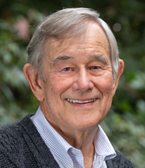Targeted stigma and school voucher threats under a revised 2002 Florida accountability law have positive impacts on school performance as measured by the test score gains of their students. In contrast, stigma and public school choice threats under the US federal accountability law, No Child Left Behind, do not have similar effects in Florida. Estimation relies upon individual-level data and is based upon regression analyses that exploit discontinuities within the accountability regimes.
Choice
The voucher debate has been both intense and ideologically polarizing, in good part because so little is known about how voucher programs operate in practice. In The Education Gap, William Howell and Paul Peterson report new findings drawn from the most comprehensive study on vouchers conducted to date. Added to the paperback edition of this groundbreaking volume are the authors’ insights into the latest school choice developments in American education, including new voucher initiatives, charter school expansion, and public-school choice under No Child Left Behind.
Local school boards have traditionally assigned the school that a child is to attend. Only by selecting their neighborhoods have parents exercised their choice of school. In recent years, this tradition has slowly given way to magnet schools, inter-district choice programs, charter schools, voucher programs, and many other forms of choice, creating a new environment for school decision making. At the same time, market concepts are under consideration for the recruitment and compensation of teachers and principals. As a result, the world of education is becoming more competitive.
We use data from a sample of applicants to a national means-tested school voucher program and a national sample of the population eligible for the program to evaluate the factors leading families to use school vouchers. Our analysis divides the process of voucher usage into two distinct stages: initial application and subsequent take-up. Using a nested logit model, we find that some factors, like religious affiliation and religious service attendance, affect both stages. Others, like mother's education, affect only one (application).
By design, randomized field trials (RFTs) avoid many of the problems that plague observational studies, foremost among them being the introduction of selection biases. In practice, however, RFTs regularly confront other difficulties, such as chance differences between treatment and control groups and attrition from the study. To address these issues, baseline data on the variable of primary interest are essential. Theory also aids the analytic process, identifying ways in which data should be disaggregated and determining the generalizability of the findings uncovered.
When estimating voucher impacts on test scores in the New York City randomized field trial (RFT) for African Americans (defined either by mother’s ethnicity, parental caretaker, mother and father’s ethnicity, or mother or father’s ethnicity), results remain significantly positive, even when models include students for whom no baseline test scores are available. These results obtain as long as one estimates impacts precisely by controlling for baseline test scores for those students who have them.
In the most anticipated decision of its 2002 term, the Supreme Court ruled, in the case of Zelman v. Simmons-Harris, that the school voucher program in Cleveland, Ohio, did not violate the Constitution’s ban on the "establishment" of religion. Opponents of vouchers (i.e., the use of public funds to help low-income families pay tuition at private schools, including religious schools) were predictably disappointed but pledged to fight on.
Twenty years ago, the National Commission on Excellence in Education delivered a shocking report called A Nation at Risk, which awakened millions of Americans to a national crisis in primary and secondary education. But today, while reverberations from that report are still being felt, solid and conclusive reforms in American primary and secondary education remain elusive. Why? In Our Schools and Our Future, the Koret Task Force on K–12 Education looks at the response to the commission's report and analyzes why it produced so much activity and so little improvement.
While the merits of vouchers have been the subject of intense public debate in recent years, there has been very little available evidence upon which to gauge their efficacy. The first publicly funded voucher plan involving private schools wasn't established until 1990 in Milwaukee; before then, the only data on school choice came from a small, poorly designed program in California. Voucher programs grew dramatically in the latter half of the 1990s. In 2000, about 60,000 students participated in seventy-one programs, most privately funded.





